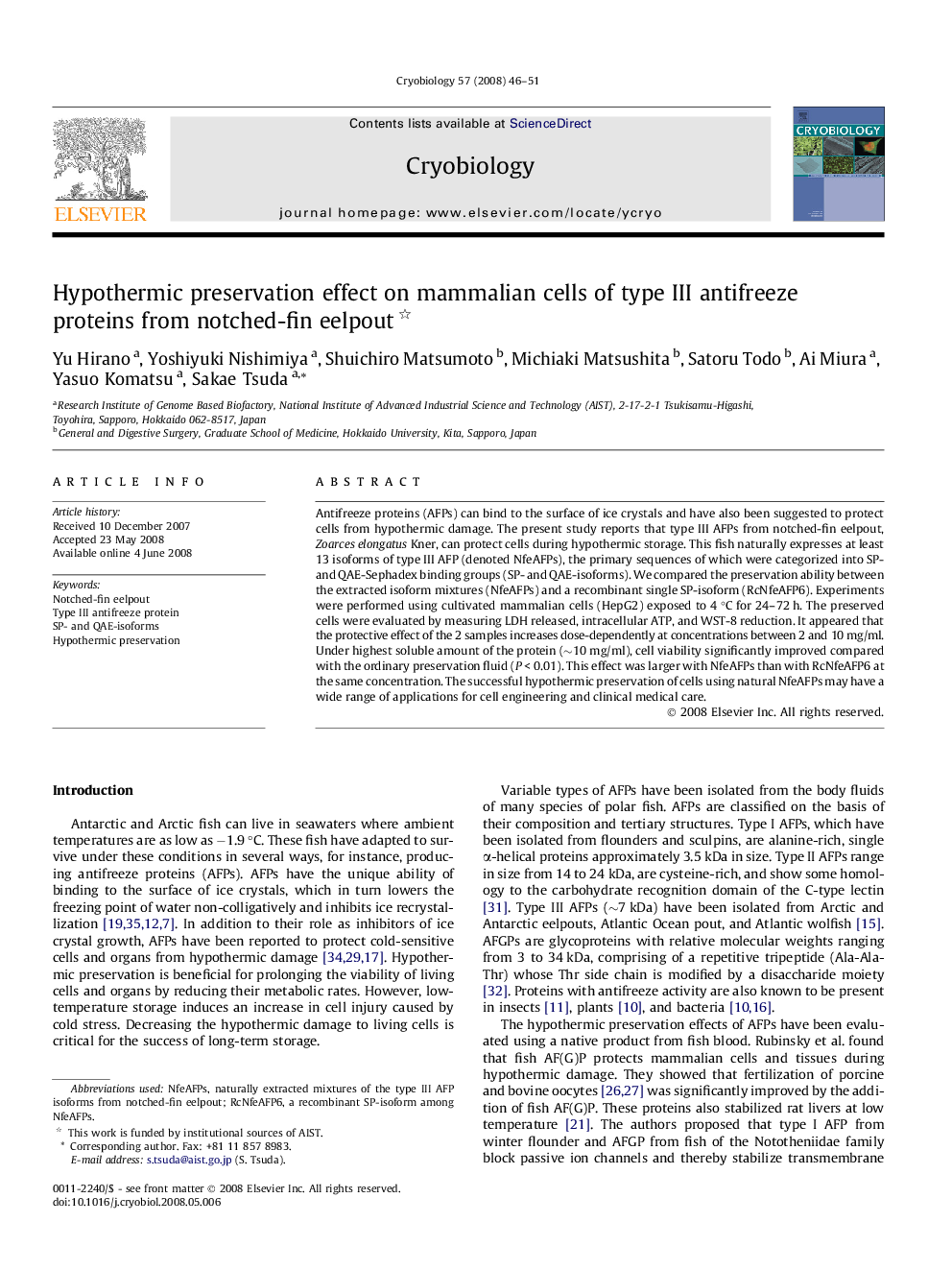| Article ID | Journal | Published Year | Pages | File Type |
|---|---|---|---|---|
| 2169294 | Cryobiology | 2008 | 6 Pages |
Antifreeze proteins (AFPs) can bind to the surface of ice crystals and have also been suggested to protect cells from hypothermic damage. The present study reports that type III AFPs from notched-fin eelpout, Zoarces elongatus Kner, can protect cells during hypothermic storage. This fish naturally expresses at least 13 isoforms of type III AFP (denoted NfeAFPs), the primary sequences of which were categorized into SP- and QAE-Sephadex binding groups (SP- and QAE-isoforms). We compared the preservation ability between the extracted isoform mixtures (NfeAFPs) and a recombinant single SP-isoform (RcNfeAFP6). Experiments were performed using cultivated mammalian cells (HepG2) exposed to 4 °C for 24–72 h. The preserved cells were evaluated by measuring LDH released, intracellular ATP, and WST-8 reduction. It appeared that the protective effect of the 2 samples increases dose-dependently at concentrations between 2 and 10 mg/ml. Under highest soluble amount of the protein (∼10 mg/ml), cell viability significantly improved compared with the ordinary preservation fluid (P < 0.01). This effect was larger with NfeAFPs than with RcNfeAFP6 at the same concentration. The successful hypothermic preservation of cells using natural NfeAFPs may have a wide range of applications for cell engineering and clinical medical care.
